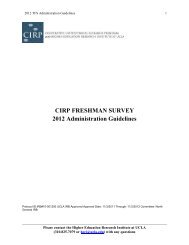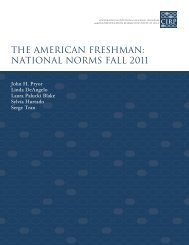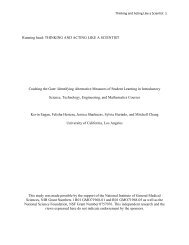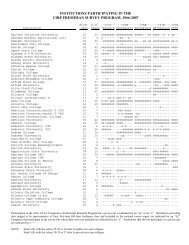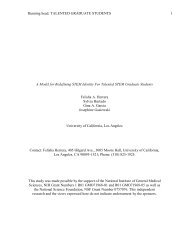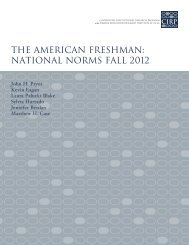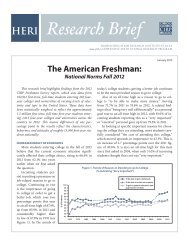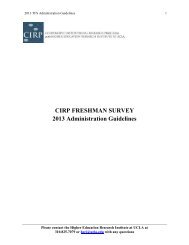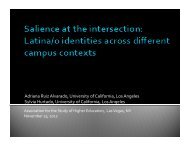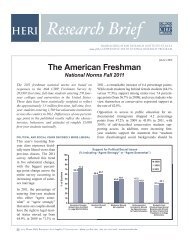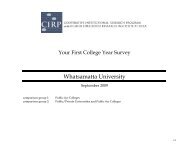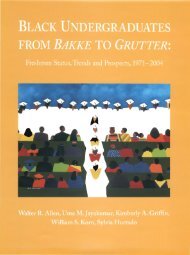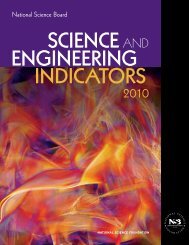North Dakota University System - Higher Education Research Institute
North Dakota University System - Higher Education Research Institute
North Dakota University System - Higher Education Research Institute
Create successful ePaper yourself
Turn your PDF publications into a flip-book with our unique Google optimized e-Paper software.
time administrators, full-time researchers, or faculty members who teach only at the<br />
postgraduate level have been excluded 2 .<br />
Institution<br />
Table 1<br />
Responses to Survey by Institution<br />
4<br />
Number<br />
Returned<br />
Full-time<br />
Undergrad*<br />
Doctorate-granting<br />
<strong>University</strong> of <strong>North</strong> <strong>Dakota</strong> (UND) 331 250<br />
<strong>North</strong> <strong>Dakota</strong> State <strong>University</strong> (NDSU) 223 167<br />
Total 554 417<br />
Four-year<br />
Dickinson State <strong>University</strong> (DSU) 53 47<br />
Mayville State <strong>University</strong> (MaSU) 23 20<br />
Minot State <strong>University</strong> (MiSU) 88 82<br />
Valley City State <strong>University</strong> (VCSU) 37 36<br />
Total 201 185<br />
Two-year<br />
Bismarck State College (BSC) 50 49<br />
Minot State <strong>University</strong>-Bottineau Campus (MiSU-BC) 14 14<br />
<strong>North</strong> <strong>Dakota</strong> State College of Science (NDSCS) 70 57<br />
Williston State College (WSC) 27 23<br />
Lake Region State College (LRSC) 14 13<br />
Total 175 156<br />
All 11 institutions 930 758<br />
*Respondents used for this report.<br />
Demographics<br />
Appendix A contains information about the percentages of respondents when compared<br />
by gender, academic rank, tenure status, age, racial background, and principal activity<br />
across the eleven public institutions of the NDUS. Table 2 below shows the comparison<br />
of the percentage of respondents by gender between the three types of <strong>North</strong> <strong>Dakota</strong><br />
institutions and the national norms. In comparing the three types of <strong>North</strong> <strong>Dakota</strong><br />
institutions, the two doctoral institutions reported a higher percentage of male faculty and<br />
a lower percentage of female faculty than either the four-year or two year schools. In<br />
comparison to the national norms, <strong>North</strong> <strong>Dakota</strong> two-year institutions reported a higher<br />
percentage of male faculty (cf. 60.3 percent to 53.2 percent, respectively) and the fouryear<br />
institutions cited a higher percentage of female faculty than the national percentage<br />
(cf. 40.0 percent to 35.5 percent, respectively).<br />
2 A respondent was included in the normative data if the respondent indicated full-time employment and if<br />
one of the following conditions was met: 1) if he or she noted teaching as principal activity and either a)<br />
taught at least one undergraduate-level course or b) taught no classes at all in the most recent term (for<br />
faculty on sabbatical or currently engaged in research full-time); 2) if he or she taught at least two courses<br />
in the last term, at least one of which was at the undergraduate level; 3) if he or she indicated spending at<br />
least 9 hours per week in scheduled teaching, but did not indicate any specific types of courses taught.



